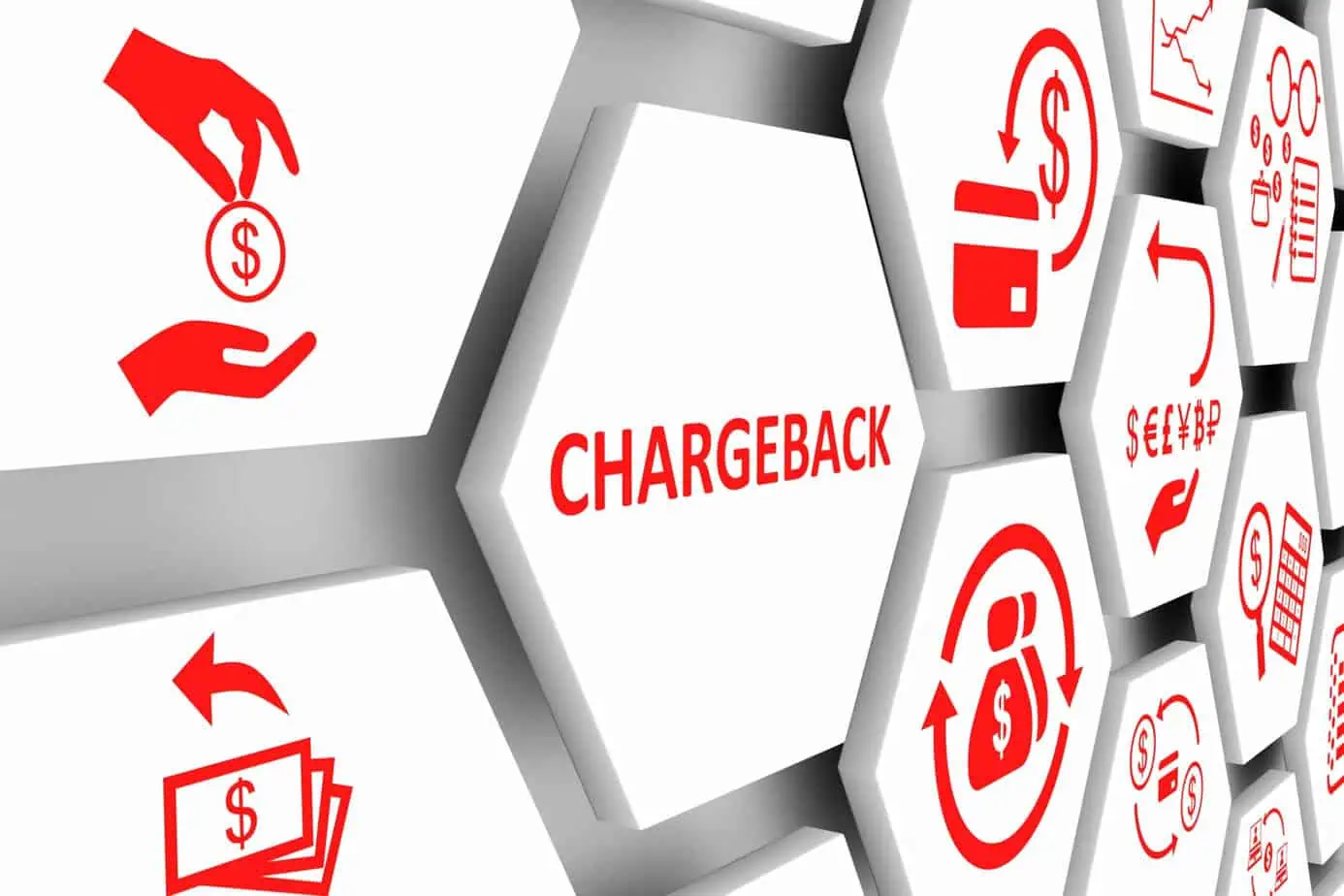To put it bluntly, chargebacks are a hassle for merchants. What is meant to be consumer protection can often become a loss of revenue for legitimate transactions. What’s worse, the burden of proof can often fall to the merchant, as many processors might give consumers the benefit of the doubt when it comes to these claims. Credit card companies set the chargeback limits. No laws govern how long you can make a chargeback request.
And in order to do that, you must understand the different rules and time limits for chargeback disputes.
That’s why this article will cover the general guidelines for the time limits on chargeback claims, how each card processor handles them individually, and the factors that can affect specific claims.
Why Are there Time Limits on Chargeback Claims?
Chargeback procedures were created as a safety net to protect consumers against fraudulent transactions and dishonest merchants. By law, cardholders have a minimum of sixty days to contest unauthorized charges under the Fair Credit Billing Act of 1974.
However, banks, card networks, and processors are able to set their own timeframes as long as they meet the minimum legal standards. Card processors, for example, normally give cardholders 120 days to dispute a charge. That is twice as long as the legal minimum. Furthermore, merchants also have time limitations when disputing chargebacks.
Unfortunately, these regulations are not universal. Depending on the card network, region, processor, bank, product type, and other factors, retailers might have different chargeback time restrictions. Additionally, the chargeback’s reason might change the deadline as well.
This can confuse some when filing chargeback claims or disputing them.
When is it Appropriate to Initiate a Chargeback?

Cardholders are justified in initiating a chargeback in cases of fraud. This typically involves unauthorized transactions made with lost or stolen credit cards, compromised payment credentials, or through account takeover attacks.
In case of lost or stolen credit cards, the cardholder can dispute any charges made by an unauthorized person. Similarly, if someone gains access to a person’s credit card details through phishing, data breaches, or any other security lapse, the cardholder can reverse any unauthorized charges. Plus, if a fraudster takes over a customer’s e-commerce account and uses stored payment details to make purchases, the cardholder can also contest these transactions.
Merchants are generally advised not to contest fraudulent chargebacks. However, instances of ‘friendly fraud’—where customers wrongly claim a transaction is fraudulent—do occur. Merchants can contest these chargebacks if they have sufficient evidence.
In exceptional situations, a cardholder might also dispute a charge due to merchant non-cooperation. For example, if a merchant accidentally processes a payment twice or if goods are lost or damaged in transit, a chargeback can be filed if the merchant fails to rectify the issue upon notification. While cardholders should first seek resolution with the merchant, not all banks enforce this as strictly as they might.
While merchants cannot dispute legitimate chargebacks from these issues, they can minimize them by providing excellent customer service and a clear, accessible refund policy that facilitates easy customer resolutions.
What Is the Time Limit for Cardholders to File a Claim? And What is the Limit for Merchants to Dispute a Claim?
Consumers have relatively generous deadlines for filing. A cardholder has 120 days from the initial transaction date or the estimated delivery date to dispute the transaction. There are some exceptions, however, which can vary by card processor. Generally, however, 120 days is the standard.
Merchants and acquirers follow different chargeback processes. Merchant response times can differ significantly depending on circumstances and the card network used.
In general, merchants will have 30 days to respond to each Visa or Discover chargeback phase. Meanwhile, American Express limits the number of credit application phases to 20 days, while MasterCard restricts the number of phases to 45 days.
The majority of responses must be submitted within 30 to 45 days. It should be noted that the merchant’s processor and acquirer will take up some of this time. This generally leaves merchants no more than a few days to respond.
It is not a guarantee that a merchant will get a reversal, but missing the deadline usually results in their case being dismissed.
What Factors Can Alter a Chargeback’s Time Limit?

Each card network has different guidelines, and cardholders are prioritized in this process. However, bank brands can impose tougher deadlines on their cardholders. The processor may also adjust timelines, and the type of chargeback may also affect how much can be refunded.
Fraud, such as a stolen card or identity theft, is often the cause of legitimate cardholder disputes. According to most chargeback cause codes, you have 90-120 days to register a claim from the transaction date, considering possible shifting of start dates.
Merchants can also experience chargebacks due to processing errors. Chargebacks for these types of transactions usually have a shorter window because they are more likely to be caught by the bank or processor before reaching the consumer. In general, retailers have 30-45 days to respond to each phase, but there are other variables to consider.
Here’s a detailed look at what determines these time limits:
- Card Network Rules: Each card network, like Visa or MasterCard, sets its own guidelines for chargebacks. Customers generally have about 120 days from the purchase date or the discovery of an issue to file a chargeback. This duration is designed to give customers ample time to dispute transactions they believe are incorrect or fraudulent. The exact number of days may vary based on the dispute’s nature and the card network’s specific regulations.
- Type of Dispute: The specific nature of the dispute also influences the time limit. For instance, time limits for disputes regarding fraud or unauthorized transactions may differ from those related to service quality or non-delivery of goods.
- Reason for Dispute: The particular reason for a customer’s dissatisfaction is crucial in setting the chargeback time limit. Common reasons include unauthorized charges, failure to receive goods or services, or receiving items that differ significantly from their description. Each reason for chargeback has its designated time frame, reflecting the nature of the complaint and the investigation required to resolve it.
- Merchant and Acquirer Response Times: Merchants usually have between 20 and 45 days to respond to a chargeback notification, depending on the card network and the specific dispute details. During this period, merchants must compile and submit evidence to challenge the chargeback.
- Bank and Payment Processor Policies: Some banks and payment processors implement more stringent time limits for filing or responding to chargebacks, potentially shortening the typical 120-day period set by card networks.
- Special Circumstances: Situations such as natural disasters or public health crises may prompt temporary extensions of chargeback deadlines to accommodate disruptions to normal living or business operations.
- Legal and Regulatory Factors: Local laws and regulations might also impact chargeback time limits, especially if they offer consumer protections that surpass those provided by card networks.
Additionally, as previously mentioned, card networks are not the only entities able to regulate chargeback time limits. In addition to merchants, acquirers also have deadlines, and they may advance the merchant’s deadline to give themselves a little extra time.
For instance, Chase Bank cardholders have 60 days to challenge a transaction, compared to the network’s 120 days. Networks indicate merchants have a 45-day response window, while Chase credit card dispute time limits are 39 days.
PayPal, which can act as a credit card processor for merchants, offers customers up to 180 days to file a claim. This is 50% more time than the major card networks allow. However, the merchant must respond within seven days.
Two additional considerations apply in this case. First, although the chargeback time limit begins on “Day One” of each phase, merchants may not receive notification until several days afterward. Depending on the submission method, they may also need to allow two to three days for delivery. You can see how a 30-day window could suddenly become very narrow.
Second, the date that constitutes “Day One” will be adjusted at every stage of the chargeback process. Thus, although there is a time restriction for chargebacks, it may change as the dispute progresses.
This point cannot be overstated. All the limits mentioned here are based on the most recent available data. These limits may change and may or may not apply to particular situations. Always check the network regulations and bank/processor standards for accurate timings.
Chargeback Time Limits per Card Network

The card networks play a significant role in limiting chargeback time restrictions. Each card brand has its own rules and vocabulary despite the fundamental principles being the same. For each processor, the time limits have been divided into two groups: those applicable to issuers/cardholders and those applicable to merchants/acquirers. Keep in mind that any of these timeframes may be affected by exceptions.
Visa and Mastercard
The first step will be evaluating the Visa and MasterCard chargeback time restrictions:
Visa limits for chargebacks
Issuer/Cardholder: Traditionally, Visa cardholders can only file a chargeback within 120 days of the original transaction. However, for some disputes, Visa has shorter deadlines. Claims may have to be filed within 75 days of the transaction depending on the circumstances.
120 days are given to file disputes for the following:
- Fraud
- Incorrect currency, transaction code, or amount
- Late presentment
- duplicative processing of transactions
- Not received merchandise
- faulty or damaged merchandise
- A terminated subscription or recurring transaction.
Only 75 days are allowed for the following dispute reasons:
- Refusal of authorization, invalid data, or absence of authority
- Card recovery bulletins for past-due, fake, lost, or stolen, cards
Acquirers/Merchants: Merchants and acquirers must react to all phases within 30 days of Day One. There is only one exception: the arbitration deadline, which is the strictest of all. If either party wants to take the disagreement to arbitration, they must do it within 10 days.
- Merchants have a 45-day limit to submit a chargeback claim
- Issuers have a 45-day limit to go through with arbitration after a representment process
- If a chargeback occurs, both parties are given 45 days to request arbitration.
Mastercard limits for chargebacks
Issuer/Cardholder: Generally, MasterCard holders have 120 calendar days from the Central Site Business Date to file a chargeback. CSBD is the date when the order was shipped or the date the initial transaction was processed.
It can sometimes take up to 45 days to resolve a Mastercard dispute. Clients may have up to a year to file for a dispute.
The 120-days limit to submit a chargeback dispute applies for the following issues:
- A variance in the quantity of a transaction
- absence of cardholder permission
- Processed transactions fraudulently
- Recurring transaction cancellation
- Late presentment
- A purchase is handled as a credit
- Erroneous currency code
- Dubious actions from the client
- Contrary to description
- Services or goods not delivered
- ATM dispute
- Unprocessed credit
- Change in PIN or chip liability
- Other cardholder disputes that are not classified
The time restriction for chargebacks is only 45 days in these cases:
- A file of alert bulletins
- Non-existent account numbers
Acquirers/Merchants: Mastercard chargebacks generally require merchants and acquirers to respond within 45 days of each phase. However, a request for information regarding a dispute is an exception. In those cases, merchants have 18 days to respond.
These are the time limits from the perspective of both parties:
- 45 days for merchants to submit a chargeback claim
- Upon receiving a chargeback representation, the issuer is allowed the same amount of time to begin arbitration.
- In the event of a chargeback, both parties have the same 45-day limit for additional arbitration.
America Express and Discover
In comparison to Visa and Mastercard, Discover and American Express are unique in that these companies function as card-issuing banks and manage their own proprietary card networks. Visa and Mastercard are card networks that issue payment cards in partnership with member banks. American Express and Discover, on the other hand, both issue cards and process card transactions.
Furthermore, the bank that issues American Express cards is also a client of cardholders that file chargebacks with American Express. Overall, this can simplify and improve efficiency, but it also restricts the merchant’s ability to respond.
Amex limits for chargebacks
Issuer/Cardholder: Previously, American Express cardholders had no time limit for disputing a charge. Since then, the business has mandated a 120-day filing deadline for virtually every refund request. Under certain conditions, the beginning date may change, but that is the only exception. However, cardholders can only dispute transactions twice.
Acquirers/Merchants: If a cardholder contacts American Express about an issue, the bank side of the corporation will either initiate a chargeback or contact the retailer for an inquiry. If Amex accepts the chargeback dispute or if they can prove that the chargeback was invalid, a merchant has a 20-day limit to dispute the inquiry.
Amex will typically proceed directly in the majority of cases. The company does provide the same options for merchants to dispute complaints as it does for consumers. When a bank determines a chargeback to be valid, the merchant cannot appeal to the card network because the two entities are identical.
Discover limits for chargebacks
Issuer/Cardholder: Despite Discover’s primary focus on its own network and bank, it also collaborates with select issuers. As a result, the company’s chargeback procedure is comparable to that of Visa and Mastercard. Typically, Discover cardholders are given 120 days from the date of a transaction to register a dispute.
Acquirers/Merchants: Answers to the Discover inquiry must be submitted within 20 days. However, banks and processors may have more stringent deadlines. A written appeal of the decision to represent must be filed within 30 calendar days.
In case of a second chargeback, the merchant has thirty days to produce further documentation. Disputes shall be escalated to Discover arbitration within 15 calendar days of the merchant’s request.
What Are the Common Reasons for Chargebacks?
Typically, chargebacks are initiated by cardholders in cases of fraud. Some common reasons include:
- Chargebacks are available if a credit card is lost or stolen and used to make a purchase.
- Also, if a fraudster obtains access to a cardholder’s credit card information through phishing or a database breach, the cardholder may request a chargeback.
- Finally, in the event that someone gains access to the payment credentials of an eCommerce account and uses them to make purchases, the cardholder may request a chargeback.
A cardholder may also be entitled to submit a chargeback if a merchant is uncooperative.
If the consumer was charged twice for the same item or if the product was damaged or lost, for example, most merchants will issue a refund as soon as they become aware of the problem. However, the cardholder may initiate a chargeback if the merchant refuses to issue a refund. Prior to disputing a charge, cardholders should attempt to resolve the issue with the retailer. Unfortunately, this may not be followed in all cases.
Chargebacks resulting from actual fraud should not be contested by merchants. Occasionally, however, a chargeback claimed by a client may be friendly fraud. In general, it is advisable to contest a chargeback if there is reason to believe that the cardholder’s fraud claims are false.
Despite the fact that merchants cannot contest legitimate chargebacks because of these flaws, they can prevent them by providing easy access to customer service that can provide reimbursements.
Chargeback Reason Codes
A reason code identifies the reason behind every chargeback. This may affect dispute time limits. For instance, some reason codes allow cardholders over a year to file. In some cases, banks must wait a specific amount of time before issuing a chargeback. For defects or “Not as Described” cause codes, the 120-day period may still apply, although “Day One” will vary depending on the circumstances.
This is especially important for retailers who use recurring payment models (subscriptions). It is possible that the merchant may provide ongoing goods or services but only charge the customer’s card annually. Cardholders may also challenge subscription payments for several months or even years after the transaction date and be able to register a chargeback months after the transaction date.
The Importance of Understanding Chargeback Limits
Understanding the many types and exceptions of chargeback time restrictions will require considerable time and effort, as with other aspects of the process.
However, understanding chargeback time restrictions is essential if you hope to recover revenue. It is very easy to miss a deadline if you do not understand the relationship between banks, card systems, and reason codes.
Most merchants find dealing with chargebacks difficult. There are strict deadlines, but not uniform ones. In some cases, the card processor’s criteria are closely followed, while in others, more stringent guidelines are implemented. Merchants can be blindsided by disputes months after they have closed a deal.
Since chargebacks were designed specifically with the consumer in mind, all merchants are presumed to be responsible until proven innocent.
Customers initiate chargebacks, and businesses have a limited amount of time to gather and provide evidence to contest them.
In order to effectively reverse a chargeback and recover lost money, the merchant must build a representation package that includes compelling evidence indicating that the chargeback is illegitimate and a rebuttal letter summarizing the merchant’s argument and evidence. This activity can be tricky to fit in alongside regular business activities, especially in smaller shops.
The situation may seem hopeless for retailers. There is no guarantee that a chargeback will be successful, and contesting them takes a lot of time and resources. However, ignoring fraudulent chargebacks would result in a revenue loss. The balancing act often leaves merchants vulnerable.
However, by outsourcing chargeback handling, merchants are more likely to succeed with their disputes.
How to Prevent Chargebacks: Best Tips in 2024
While it’s important to know how to respond to chargebacks, taking proactive steps can greatly minimize the risk of disputes. Merchants who adopt preventive strategies can strengthen their defenses against chargebacks and cultivate better customer relationships.
- Robust Fraud Prevention Measures
Adopt advanced security measures such as address verification systems (AVS), 3D Secure technology, and other protocols to secure transactions. Inform your customers about these measures to reassure them of the security of their purchases.
- Clear Communication and Transparency
Ensure clear communication with customers to avoid misunderstandings that could lead to chargebacks. Provide detailed descriptions of products, transparent pricing, and easily accessible terms and conditions throughout the purchase process.
- Exceptional Customer Service
Invest in high-quality customer service to prevent chargebacks related to dissatisfaction. Respond quickly to customer inquiries, address their concerns effectively, and aim to resolve issues amicably.
- Straightforward Refund and Return Policies
Develop a clear and user-friendly refund and return policy. Make sure it’s prominently displayed on your website and invoices. Handle refunds and replacements promptly to show your dedication to customer satisfaction.
- Regular Transaction Monitoring and Analysis
Monitor your transactions regularly to detect any unusual activity or discrepancies that could suggest fraud. Identifying and addressing these signs early can prevent chargebacks.
- Accurate Transaction Descriptors
To prevent confusion, use clear and recognizable business names and transaction descriptors on customer statements. This clarity helps customers easily identify their purchases and reduces chargeback requests due to unrecognized transactions.
- Educate Your Customers
Encourage customers to contact your customer support team for any issues before initiating a chargeback. Educating them about proper procedures for resolving disputes can lead to quicker solutions and fewer chargebacks.
- Stay Updated on Industry Trends
Keep informed about the latest trends and changes in payment regulations. Adapting to these can help ensure your business practices remain compliant and reduce the likelihood of chargebacks.
Conclusion
Understanding chargeback limits in 2024 is crucial for merchants to navigate disputes effectively. Chargebacks, meant to protect consumers, often burden businesses. Consumers typically have 120 days to dispute, while merchants face shorter response windows of 20 to 45 days. Chargeback reason codes further complicate matters, dictating allowable time frames.
Proactive measures such as fraud prevention, clear communication, exceptional service, and transparent policies can minimize disputes. Regular monitoring, accurate descriptors, customer education, and staying updated on industry trends are vital. By comprehending chargeback limits and implementing preventive strategies, merchants can protect their businesses, maintain positive relationships, and minimize revenue losses in the complex payment landscape.
Frequently Asked Questions
What are the general time limits for filing chargebacks?
Chargeback time limits vary by card network. Visa and Mastercard typically allow cardholders to file within up to 120 days, but specifics can change based on the dispute type or reason. For example, Visa sometimes requires disputes within 75 days.
What are the response times required from merchants once a chargeback is initiated?
Merchants usually have 20 to 30 days to respond to Visa disputes and 45 days for Mastercard, though this may be reduced to 18 days if more information is needed.
How can merchants manage and respond to chargebacks effectively?
Merchants can use tools like automated notifications and detailed records to manage chargebacks efficiently. Prompt responses to notifications are crucial to meeting deadlines set by acquirers and card networks.
What are some tips for reducing the occurrence of chargebacks?
Clear communication, excellent customer service, and fraud prevention technology are key to reducing chargebacks. Detailed product descriptions and transparent return policies can also help minimize disputes.

